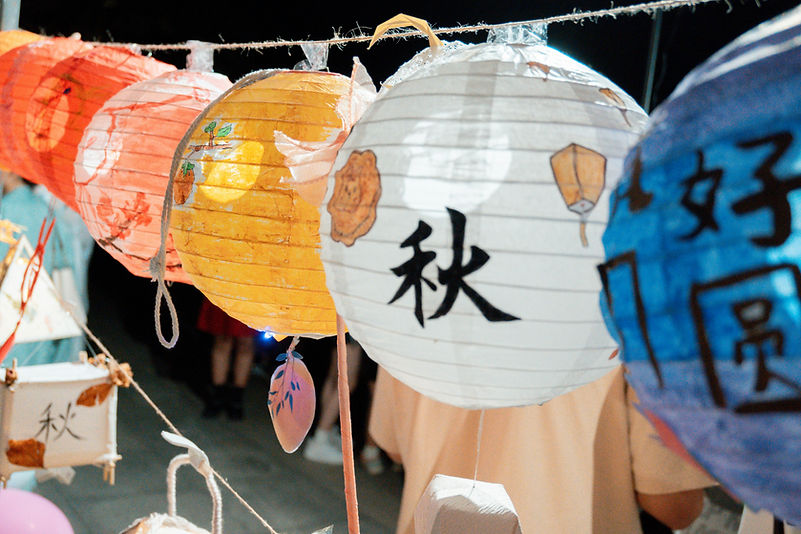
Face-to-face classes - Learn Chinese / Japanese / Korean in London or Manchester - 0208 935 5183

Mandarin VS Cantonese:
Key Differences
Every Learner Should Know
If you're interested in learning Chinese, you've likely come across two of its most well-known varieties: Mandarin and Cantonese. Both are major Chinese languages with rich cultural histories, but they differ in more ways than one, from pronunciation and grammar to their regional usage and even the way they’re written.
We’ll break down the key differences between Cantonese and Mandarin that every learner should know, whether you're a complete beginner or already learning one and curious about the other.
1. Language Family and Status
Both Cantonese and Mandarin belong to the Sino-Tibetan language family and are part of what we collectively refer to as the “Chinese language.” However, Chinese is more of a language group than a single language. Within it, Mandarin and Cantonese are two distinct “varieties” , more different from each other than Spanish is from Italian.
-
Mandarin (Putonghua / 普通话) is the official language of China and Taiwan and one of the four official languages in Singapore. It is the most spoken language in the world, with over 1 billion native speakers.
-
Cantonese (廣東話) is primarily spoken in Hong Kong, Macau, Guangdong Province, and among many diaspora communities in Southeast Asia, Canada, and the U.S. It can also be referred to as Yue (粵語) especially in academic, formal, or linguistic contexts.
Therefore, while Mandarin is more widely spoken globally, Cantonese has a strong cultural and regional influence, especially in media, film, and overseas communities.


Mandarin is the main language spoken in China, Taiwan (top) and Singapore(bottom), while Cantonese is an official language of Hong Kong (bottom).


2. Pronunciation and Tones
One of the most obvious differences between Cantonese and Mandarin lies in how they sound.
Tones:
-
Mandarin has 4 tones, plus a neutral tone.
-
Cantonese has 6 to 9 tones, depending on how you count them.
This makes Cantonese tonally richer and sometimes more challenging for learners, since subtle differences in pitch can completely change a word’s meaning.
Example
''Mother''
Mandarin mā (妈) – high level tone
Cantonese mā (媽) – high level tone
''Horse''
Mandarin mǎ (马) – rising-falling tone
Cantonese máh (馬) – rising tone
In Mandarin, mā and mǎ differ in pitch contour. In Cantonese, tonal differences are even more nuanced.
Pronunciation:
-
Mandarin uses simplified phonetics and fewer final consonants.
-
Cantonese retains more classical Chinese phonology, including stop consonants like -p, -t, -k at the ends of syllables.
This means many Cantonese syllables end abruptly, which gives the language its characteristic rhythm and “punchiness.”
3. Writing System: Simplified vs. Traditional
Both Mandarin and Cantonese can be written using Chinese characters, but which set of characters you use depends on the region:
-
Mandarin in Mainland China uses Simplified Chinese (简体字).
-
Cantonese in Hong Kong and Taiwan (Mandarin) uses Traditional Chinese (繁體字).
But there’s another layer: Colloquial Cantonese often uses characters that do not exist in formal Mandarin, such as 喺 (hai2 – be in) or 咩 (me1 – what?). These characters reflect spoken Cantonese more accurately but are rarely taught in Mandarin classes.
Example
Mandarin 你现在在哪儿?(nǐ xiànzài zài nǎr?) – Where are you now?
Cantonese 你而家喺邊?(nei5 ji4 gaa1 hai2 bin1?)
This makes written Cantonese more distinct and often harder for Mandarin speakers to fully grasp if they haven't studied it specifically.

Since Simplified and Traditional Chinese sometimes use the same characters, it can be hard for beginners to tell which one they’re reading.
4. Vocabulary Differences
While there is a good amount of overlap in vocabulary, there are plenty of everyday words that are entirely different.
Examples
Vocabulary, Mandarin, Cantonese
Good morning,早安 (zǎo ān),早晨 (zou2 san4)
Thank you,谢谢 (xièxie) ,多謝 (dō1 je6)/ 唔該 (m4 gōi1)
To eat , 吃 (chī) ,食 (sihk6)
Video,视频(shì pín) ,影片(jing2 pin2)
Cantonese also has a richer slang vocabulary and has preserved many classical Chinese expressions that are no longer used in Mandarin.
5. Grammar and Sentence Structure
Mandarin and Cantonese grammar is generally similar, both are analytic languages (word order matters a lot), and they lack verb conjugation and plural forms like in English.
However, there are some notable grammatical differences:
-
Particles: Cantonese uses a wide variety of sentence-final particles to convey emotion, mood, or emphasis, a bit like adding “you know?” or “right?” at the end of English sentences. Mandarin has particles too, but fewer. For example (Cantonese): 你去咗啦 (nei5 heoi3 zo2 laa1) – "You already went, huh"
-
Aspect markers: Cantonese tends to use different markers for tense or aspect compared to Mandarin.
Example
Mandarin 他吃了饭 (tā chī le fàn) – “He ate”
Cantonese 佢食咗飯 (keoi5 sik6 zo2 faan6)
So while basic sentence structures can often align, the details and nuances can differ significantly.
6. Mutual Intelligibility
Two native speakers , one Cantonese, one Mandarin , try to talk to each other.
Can they understand each other? Or not at all?
Now you may wondering, Can Cantonese and Mandarin speakers understand each other?
Answer: No, at least not fully.
Mandarin and Cantonese are not mutually intelligible when spoken, despite sharing many written words. If a Mandarin speaker hears Cantonese for the first time, it will likely sound like a completely different language.
However, if both are written in standard written Chinese, Mandarin and Cantonese speakers may be able to understand the general meaning, especially when the text avoids slang or region-specific terms.
7. Cultural Identity and Media
Learning Cantonese or Mandarin can also be a window into distinct cultural worlds.
-
Mandarin dominates mainland Chinese media, education, and politics.
-
Cantonese is the heart of Hong Kong cinema, Cantopop, and many international Chinese communities.


Chinese Chess 象棋
A statue of Bruce Lee
Think Bruce Lee, Stephen Chow, Jackie Chan’s old movies, or TV dramas, all in Cantonese. The language carries a cultural flavour and tone that’s unique, often more expressive or cheeky than Mandarin.
If you’re deciding which language to learn, ask yourself: Which culture resonates with you more?
Whether it's mainland China's modern rise or Hong Kong’s bold, creative energy, your connection to the culture can make your learning journey more meaningful, and more fun.
Which Should You Learn First?

You Should Learn Mandarin If…
-
You want to live or work in mainland China or Taiwan.
-
You want to learn the most widely spoken variety.
-
You're looking for more learning resources.

You Should Learn Cantonese If…
-
You plan to live in Hong Kong or Macau.
-
You’re interested in Hong Kong cinema or culture.
-
You want to talk to people who speaks Cantonese.

While Cantonese and Mandarin share a common ancestry, they are distinct in pronunciation, tone, vocabulary, and culture. Understanding these differences can help you make a more informed choice.
At LingoClass, we offer expert-led courses in both languages ,perfect for learners of all levels. Whether you want to watch Chinese films, connect with family, or explore something new, we're here to help.
